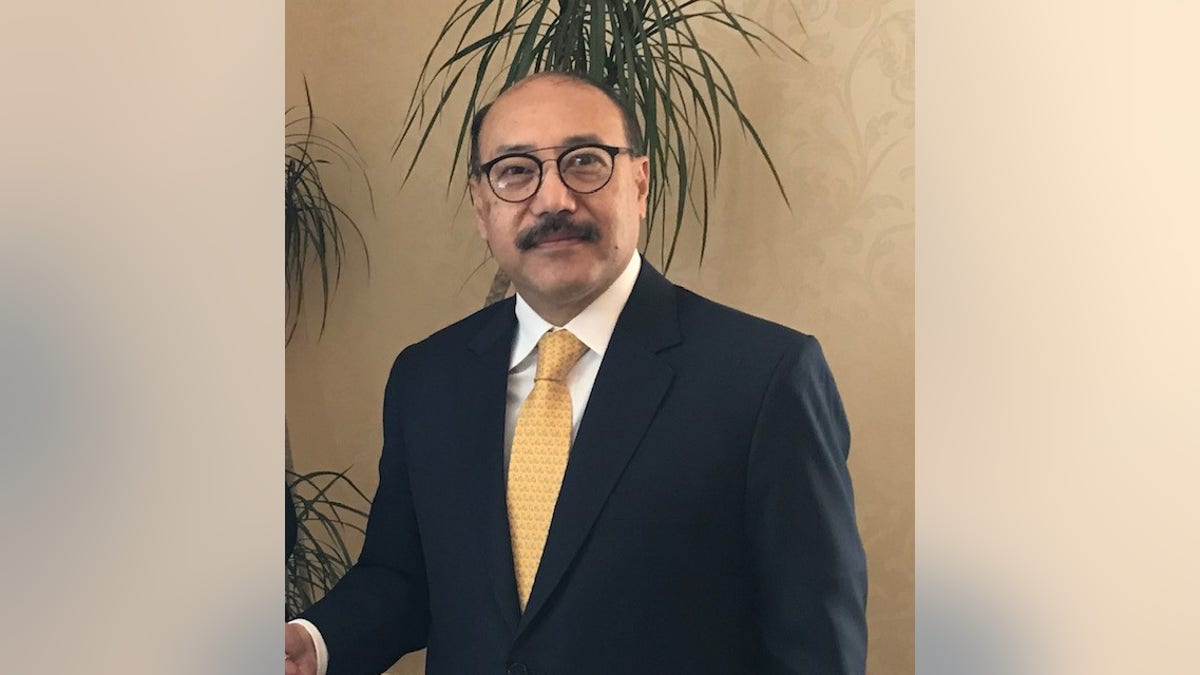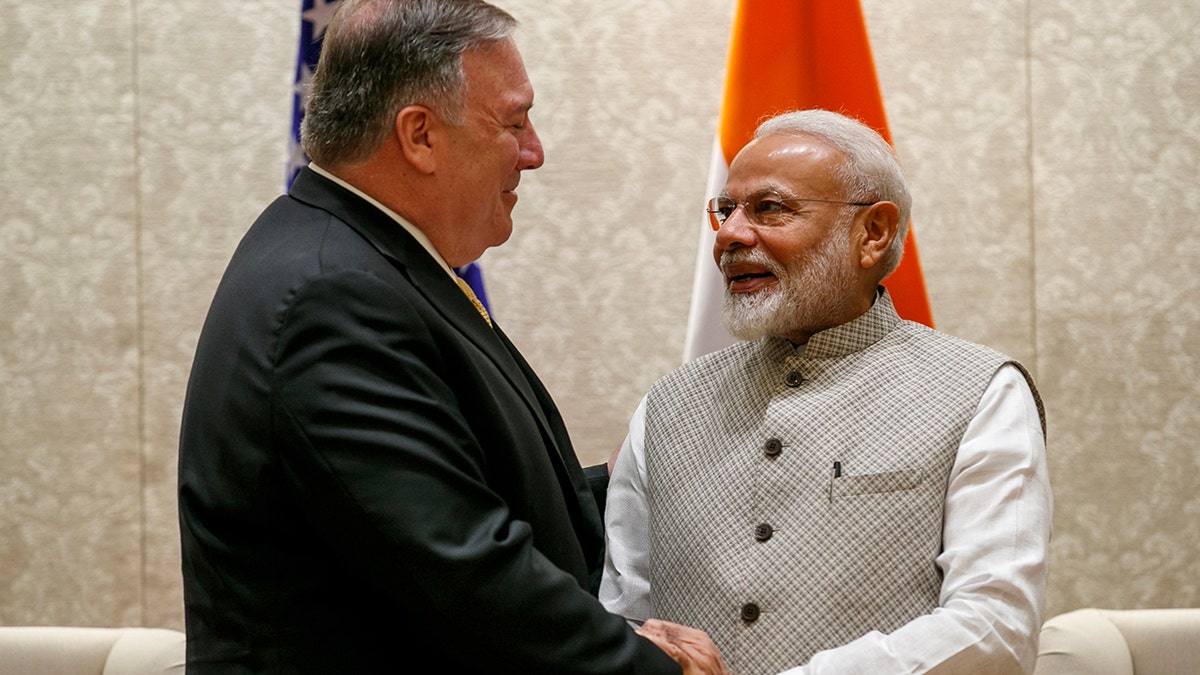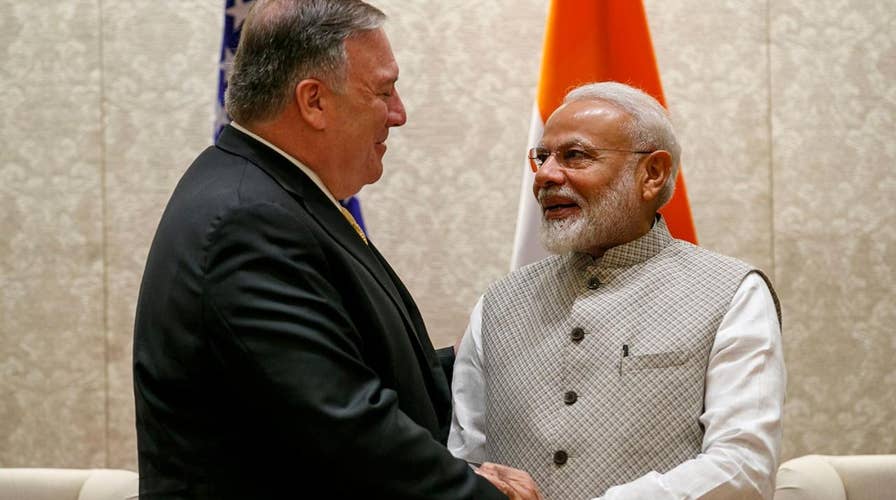India seeks to boost the U.S. oil economy
Constrained by Iran sanctions, India is seeking to boost the United States oil economy.
As the United States comes down hard with sanctions on Iran, coupled with harsh penalties for those countries that continue to do business with the hardline regime, the world’s second-most populous country has found itself in the middle of an energy crossfire.
But what started as a point-of-contention between the U.S. and India seems now to be bringing the two nations closer - with the added benefit of bolstering America's oil economy.
“India will account for 25 percent of the global growth in energy consumption in the next decade or so,” Harsh Vardhan Shringla, India’s Ambassador to Washington told Fox News on Monday. “We are very large energy consumers and for the first time, we are importing energy from the United States.”

Harsh Vardan Shringla, India’s Ambassador to Washington (Fox News/Hollie McKay)
Shringla underscored that, in President Trump’s own words during his State of the Union address this year, for the first time the U.S was a “net exporter of energy.”
While the declaration was somewhat premature, the Energy Information Administration (EIA) estimates that by 2020, the U.S. could reach that milestone for the first time since the 1950s due to increased production of crude oil and natural gas.
“The United States has emerged as an important source of energy for India and helped us to diversify our energy. But in that context, the decision of the administration to not provide any more waivers for the import of oil from Iran has come at a certain cost because we import ten percent of our energy requirements from Iran,” Shringla said. “Many of our refineries are used to processing heavy Iranian crude. We will need both time and resources to be able to diversify away from that, so it has certainly come at a cost to our economy.”
Following a meeting in New Delhi late last month with India’s newly re-elected Prime Minister Narendra Modi, U.S. Secretary of State Mike Pompeo acknowledged the challenges India faces in severing oil ties with Iran, but underscored that the U.S and India have a “shared understanding of the threat and a common purpose” to reign in the “terror regime” that emanates from Tehran.

Secretary of State Mike Pompeo, left, shakes hands with Indian Prime Minister Narendra Modi, during their meeting at the Prime Minister's Residence, Wednesday, June 26, 2019, in New Delhi, India. (AP)
As it stands, India is the globe’s fifth-largest economy which imports some 85 percent of its energy, and traditionally Gulf imports have made up the vast majority.
“We do understand this is a priority for the administration and that is what partnerships are all about,” Shringla observed. “That we understand.”
ALLEGED IRANIAN HACKER WHO AIDED CYBER ESPIONAGE ATTACKS ON THE US UNMASKED
Furthermore, Shringla highlighted Modi’s vision for India to “grow into a $5 trillion economy” over the next five years under his auspices, with help from the U.S.
India currently has the seventh-largest nominal GDP, but over the past five years has been deemed to have the fastest growing economy in the world – surpassing even that of China, according to the International Monetary Fund (IMF).
“For that vision to materialize, we have to grow at a very significant rate. The U.S. is the largest trading partner, the largest investor in India,” he added. “Undoubtedly, U.S. companies have also invested very significantly in India and have created lots of opportunities in India and are a rather critical part of our efforts to become a $5 trillion economy with the United States. We are in step with you.”

